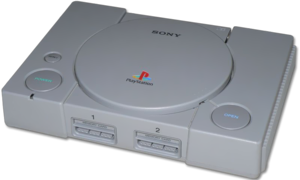Difference between revisions of "SNES9X4P"
| Line 31: | Line 31: | ||
==Usage== | ==Usage== | ||
It has been reccomended that players overclock to at least 666Mhz, in order to 'keep things sensible'[[http://www.gp32x.com/board/index.php?/topic/55378-snes9x4d4p-another-new-build-now-with-hi-res-and-new-rom-picker/ -]], however greater speeds also help. | It has been reccomended that players overclock to at least 666Mhz, in order to 'keep things sensible'[[http://www.gp32x.com/board/index.php?/topic/55378-snes9x4d4p-another-new-build-now-with-hi-res-and-new-rom-picker/ -]], however greater speeds also help. | ||
| + | |||
| + | ===Loading a Game=== | ||
| + | Upon starting SNES9X4P, you will be presented with PickleLauncher (identifiable by the green mountains in the background). Up the top of the screen, you will see the current directory. If the main screen says <no files detected in dir>, press the X button until you are back at the root directory (/), and then scroll down and select (with B) /media , then /SD_CARD where SD_CARD is the name of your card, and then navigate to the folder where you have put your roms (e.g. /pandora/menu/SNES). When you are presented with the list of ROM files, scroll down to the desired on and press B to load it. | ||
| + | |||
===Default Controls=== | ===Default Controls=== | ||
{|class="wikitable sortable" border="1" cellpadding="1" cellspacing="0" style="font-size: 90%; border:1px solid gray; border-collapse: collapse; text-align: center; width: 35%;" | {|class="wikitable sortable" border="1" cellpadding="1" cellspacing="0" style="font-size: 90%; border:1px solid gray; border-collapse: collapse; text-align: center; width: 35%;" | ||
Revision as of 21:09, 29 April 2011
| The information here is for Version 1.39ff. Things may change in later versions as the emulator is updated. |
| SNES9X4P | |
|---|---|
| Download(s) | Repository |
| License | {{{license}}} |
| Developer(s) | snes9x team / SiENcE / skeezix / ivanovic |
| Porting developer(s) |
{{{porter}}} |
| Version | 1.39ff (2011-03-10) |
| Status | |
| Webpage | GP32x Thread Source Code |
| Compatibility List (wiki) | |
Contents
Emulator Information
Development Status
Compatibility
Known Bugs
Other Notes
Installation Instructions
Installation
Download the latest version of the emulator from the repository (here) and place it in one of the folders on your SD card according to the PND guide here (This guide will assume that you put the PND in /pandora/menu) Restart your Pandora. In XFCE. the icon to the emulator should appear in the menu under 'menu -> Emulators -> SNES9x4p' (if you put the PND in /pandora/menu), or on the desktop (if you put the PND in /pandora/desktop or /pandora/apps)
ROM Images
SNES ROM images are in the form of .smc or .fig, howver SNES9x4p can also play compressed (.zip) ROM files.
While it does not matter where the ROM files are placed, it is often easiest to put them somewhere that makes sense in relation to the PND for easy browsing. A good place to put them would be either in a clearly-named folder in the root of the SD card (e.g. /SNES) or in the same folder as the emulator PND (e.g. /pandora/menu/SNES). It does not matter how many ROM files are in the folder, what directory structure is used.
Usage
It has been reccomended that players overclock to at least 666Mhz, in order to 'keep things sensible'[-], however greater speeds also help.
Loading a Game
Upon starting SNES9X4P, you will be presented with PickleLauncher (identifiable by the green mountains in the background). Up the top of the screen, you will see the current directory. If the main screen says <no files detected in dir>, press the X button until you are back at the root directory (/), and then scroll down and select (with B) /media , then /SD_CARD where SD_CARD is the name of your card, and then navigate to the folder where you have put your roms (e.g. /pandora/menu/SNES). When you are presented with the list of ROM files, scroll down to the desired on and press B to load it.
Default Controls
| SNES ControlPad Button | Pandora Button | Notes |
|---|---|---|
| A (Red) | B (Gamepad) | These buttons are in the same position as on the SNES controller, but have different letters |
| B (Yellow) | X (Gamepad) | |
| X (Blue) | Y (Gamepad) | |
| Y (Green) | A (Gamepad) | |
| Start | Start | |
| Select | Select | |
| Right Shoulder | Right Shoulder | |
| Left Shoulder | Left Shoulder | |
| D-Pad (Up, Down, Left, Right) | D-Pad (Up, Down, Left, Right) |
In-Game Menu
Press the spacebar to open the in-game menu (pauses the game). X closes the menu and resumes the game. The menu allows you to: |Reset |Simlar to pressing RESET on the console |- |Save State |Saves a 'state' of the game |- |Load State |Loads a previously saved state |- |State Slot |Choose which state to load/save from/to. Numbers range from 0-3. |- |Display Frame Rate |If ON, shows the number of frames per second (FPS) at the bottom of the screen. |- |Transparency |Enables the transparency layer |- |Display Mode |Alters the Dispay (2:2 no-anti-aliasing, 2:2 Scaled, 2:2 Smoothed (anti-aliased), 3:2 no anti-aliasing). |- |Frameskip |Increase this number if you experience slow or stuttery gameplay |- |Sound Volume |(Does not appear to work) |- |Credit |Lists the credits for the emulator |- |Exit |Returns to PickleLauncher |}
